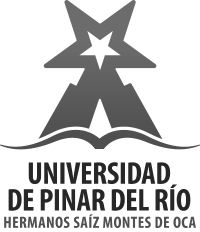Physical preparation of the elderly for biopsychosocial rehabilitation in senior citizens' homes
Main Article Content
Abstract
The physical preparation of older adults for their biopsychosocial rehabilitation in nursing homes is a complex process. Cuban nursing homes are social institutions that provide comprehensive care to older adults who lack parental support or family members who can care for them during the day. From a functional perspective, they have difficulty performing daily activities. The objective of this article was to propose new relationships in the physical preparation of older adults for their biopsychosocial rehabilitation, based on the connection between the university and nursing homes as a social institution and the role of the Physical Education teacher in this context. Theoretical methods used were: historical-logical, analytical-synthetic, inductive-deductive, and systems approaches, documentary analysis; empirical methods such as observation, modeling, expert judgment, and group interviews, which allowed for a scientific approach to the topic at hand; and percentage calculation as a mathematical statistical method. The results of the diagnosis demonstrated the need to incorporate physical education teachers into the integrated work carried out in these spaces, with the aim of offering comprehensive care to older adults, justifying the construction of new relationships between the university and senior citizen homes as social institutions. A new role proposed for physical education teachers is to integrate them into senior citizen homes, strengthening the university-social institution relationship, promoting better performance of their physical functions, and consequently, adequate biopsychosocial rehabilitation of older adults.
Downloads
Article Details

This work is licensed under a Creative Commons Attribution-NonCommercial 4.0 International License.
References
Abril Gil, G., Rojas Angel Bello, R. T., & Faba Crespo, M. B. (2022). La preparación del adulto mayor con estilo de vida saludable desde la actividad física comunitaria. Conrado, 18(87), 223-232. http://scielo.sld.cu/scielo.php?script=sci_arttext&pid=S1990-86442022000400223&lng=es&tlng=es
Barrientos, M., Casabona, E., & Cañizares Fernández, M. (2024). Rehabilitación física integrada con estimulación de la fluidez verbal en el adulto mayor cardiópata. ISSN: 19962452 RNPS: 2148. PODIUM. Revista de Ciencia y Tecnología en la Cultura Física. 19(3), e1651. https://podium.upr.edu.cu/index.php/podium/article/view/1651
Cáceres, M., & Verónica, E. (2020). Calidad de vida de los adultos mayores en el Centro de Salud San Jerónimo. Universidad César Vallejo. https://repositorio.ucv.edu.pe/bitstream/handle/20.500.12692/61876/C%C3%A1ceres_MEV-SD.pdf?sequence=1
Cárdenas Tejeda, Y. (2025). Estrategia de intervención comunitaria para la atención al adulto mayor en el Parque Humedal Grande del Municipio Morón, 2025. Resultado de Proyecto de Investigación.
Girón Calvente, R. (2010). La actividad física para personas mayores. EFDeportes.com, Revista Digital. 15(147). https://www.efdeportes.com/efd147/la-actividad-fisica-para-personas-mayores.htm
Martínez, Jennyfer. (2022). Educación física como elemento socializador para el adulto mayor. Proyecto Curricular CÓDIGO: 2011220044 Universidad Pedagógica Nacional. Facultad de Educación Física. Bogotá, D.C,
Mosqueda Fernández, Andres. (2021). Importancia de la realización de actividad física en la tercera edad. Dilemas contemporáneos: educación, política y valores, 9(spe1), 00036. https://doi.org/10.46377/dilemas.v9i.2943
Ministerio de Educación Superior de Cuba. MES. (2019). Instituto Superior de la Cultura Física. "Manuel Fajardo". Programas de la Disciplina Cultura Física Terapéutica y Profiláctica. La Habana. 2019. MES.
Organización Mundial de la Salud (2022). Publicaciones. Estrategia Mundial sobre régimen alimentario, actividad física y salud. http://www.who.int/ditphysicalactivity/strategy/eb11344/strategy-spanish-web.pdf


